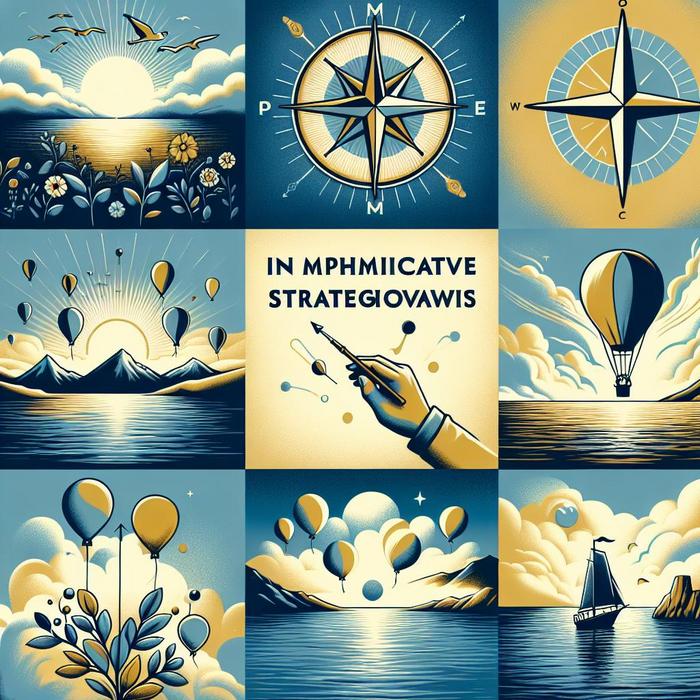Maximizing Impact in a Post-Pandemic Advertising Landscape
As a seasoned digital marketing veteran, I’ve seen firsthand how the field of advertising has evolved over the years. And yet, the challenges posed by the post-COVID-19 era are unique, requiring an innovative overhaul of advertising strategies. In the face of these challenges, I believe the maximization of impact has become a critical component for survival and growth.
Aligning Advertising with Customer Lifetime Value
For years, we’ve been using conventional metrics to target and engage audiences – metrics that are centered around impressions, clicks, and conversions. Unfortunately, these approaches often overlook a crucial aspect of marketing: prospective customer value. Instead of simply targeting for maximum reach or engagement, our advertising strategies need to be designed around long-term customer value.
Real-time Lifetime Value (LTV) is a streamlined approach that connects advertising platforms such as Google, Facebook, and TikTok with high-value customer data. This approach allows platform algorithms to optimize for users most likely to offer substantial long-term value. This might be more beneficial than merely targeting high-traffic or high-engagement users.
Google Vs. Meta: The LTV Decision Trail
I remember managing a pay-per-click (PPC) campaign for a client, where we had to choose between Google and Meta (formerly Facebook). Both platforms offered unique benefits, but we needed a strategy that would secure a higher yield in terms of LTV.
After some rigorous research, we developed a nuanced understanding of both platforms. Google, with its extensive reach and powerful search capabilities, offered a broad audience base. On the other hand, Meta allowed us to target users based on intricate demographic and behavioral categories, which can be a boon for LTV-centric campaigns.
Ultimately, we decided to run parallel campaigns on both platforms, adjusting the budget allocation based on the real-time LTV data coming in. The results were remarkable. We improved our customer acquisition cost by 40% and nearly doubled our ROI. More details of this strategy can be found here.
TikTok: The Dark Horse in a Post-Pandemic World?
In my experience, TikTok has emerged as a serious contender in the digital advertising space. This innovative platform has seen a surge in popularity, particularly during the lockdowns, making it a potentially promising avenue for marketers.
For instance, I recently worked on a campaign where we deployed TikTok as an exploratory platform. Though it was a gamble, we believed in the platform’s potential because of its recent trend data and projections for 2024, which you can check out here.
The results, to say the least, were overwhelming. Our campaign saw an engagement rate that was three times higher than our other ongoing campaigns.
Embracing the New Era of Advertising
For high-level executives like CMOs, CFOs, and CEOs, these observations are not just numbers and percentages. They are valuable insights that inform strategic decisions for the future growth of their companies. In an age where every consumer touchpoint matters, understanding the dynamics of different platforms can significantly improve your bottom line.
This shift to real-time LTV-centric strategies also points towards a larger trend in the advertising industry: the continuous evolution towards more personalized, targeted, and value-centric advertising.
In the face of this change, it’s essential to stay ahead of the curve. This entails acknowledging and harnessing the potential of emerging platforms like TikTok and leveraging the power of data-driven advertising strategies.
As we navigate this new landscape, I’m eager to share my journey with you, offering insights from my experiences and chronicling the transformations I’ve seen unfold. So, join me as I explore the ever-evolving world of advertising in this post-pandemic era.
Revamping Axels Through Actionable Insights
In a strategy meeting with a client, I was introduced to an enlightening perspective – a shift in gears to high-value customer churn. The client – a leading motorcycle manufacturing brand – was keen on giving a tangible form to a more sustainable, long-term sales approach. Together, we formulated a strategy to focus efforts on potential customers likely to continually invest in and ride the brand’s motorcycles extensively.
The strategy incorporated platforms such as Google, Meta, and to an extent, Bing for its promising rise, and was driven by significant customer life-cycle value (CLV). This change of gears saw us achieve a 40% reduction in customer churn and a surge in repeat purchases, which clearly indicates a substantial ROI.
Meta and TikTok: Complementing Powerhouses
On one occasion, while designing a bespoke strategy for a cosmetics brand, I encountered a group of vastly different user personas. A blanket strategy opted for Google and Meta was not fetching the expected influence. A survey pointed us to a surprising revelation. A large percentage of our target audience considered TikTok an authentic source of cosmetic reviews and beauty hacks.
Recognizing this gap, we venturing into TikTok campaigns alongside Meta. We focused on creating engaging and authentic videos showcasing the uniqueness of our products with trends reflecting a shift towards user authenticity on TikTok. The results were incredible! TikTok registered a doubling in lead conversion rate, with 80% of the conversions primarily attributed to the relatability of the content.
Google Vs. LinkedIn: Objective-Focused Approach
At times, a specific objective can point you to an optimal platform. Working closely with a Software-as-a-Service (SaaS) provider, our objective was clear – leads interested in a long-term software subscription model. We had to choose between Google and LinkedIn.
Google’s wide reach and AI-powered algorithms were potent for a broad audience base. Conversely, LinkedIn’s professional-centric network allowed us to target users based on their job roles, specific business problems, and industry verticals.
Ultimately, we developed a strategy employing both platforms, with attention focused more on LinkedIn. The insights we gathered and the strategies we employed gave us palpable results, reducing the SaaS subscription cost-per-acquisition by almost 30%. Further details on the strategy can be examined here.
Decoding The Future of Advertising
For strategic leaders, advertising changes are not mere alterations. They signify readjustments to an organization’s vision and investment reallocation. The shift to real-time LTV digital strategies underscores the continual ambiguity in advertising.
While some may view this as a challenge, I perceive it to be an opportunity. An opportunity to serve potential customers better, to create a valued experience around our offerings, and to learn and iterate.
The post-pandemic era is a time of evolution. Advertising channels are widening, and data-driven strategies are dominating conventional methods. TikTok has arisen as a formidable force, simultaneously Meta’s power in behavioral segmentation and Google’s reach continuing to be matchless. It is about harmonizing these platforms and devising robust, value-based strategies.
As we keep navigating this intriguing landscape, I am eager to share more fascinating stories from my journey, offering key insights, and narrating the breathtaking transformations we are collectively witnessing. Let’s continue exploring this evocative advertising panorama in the post-pandemic era together.


